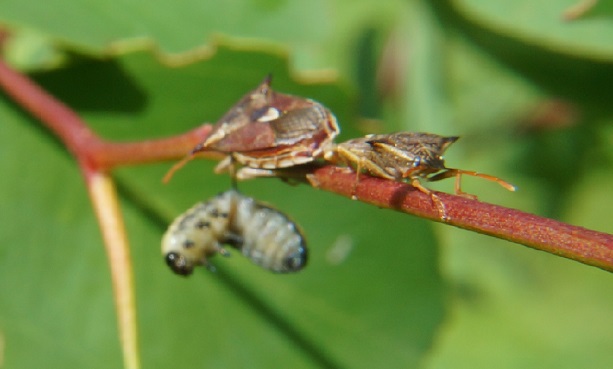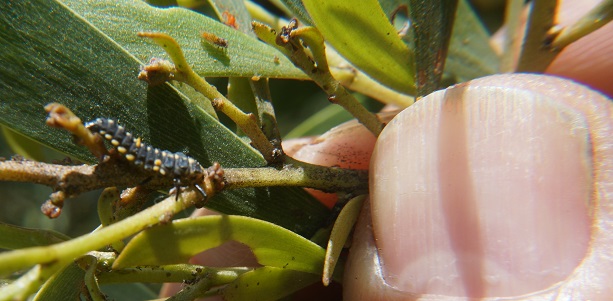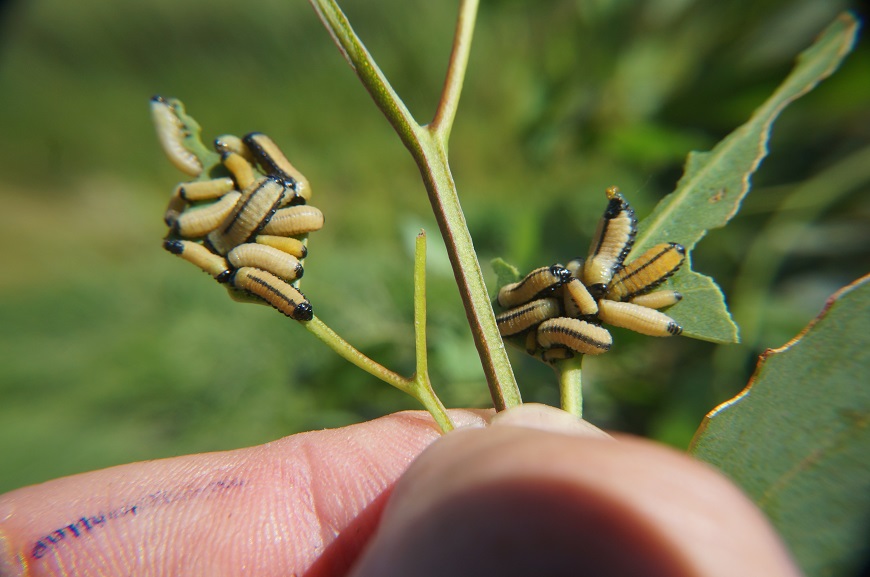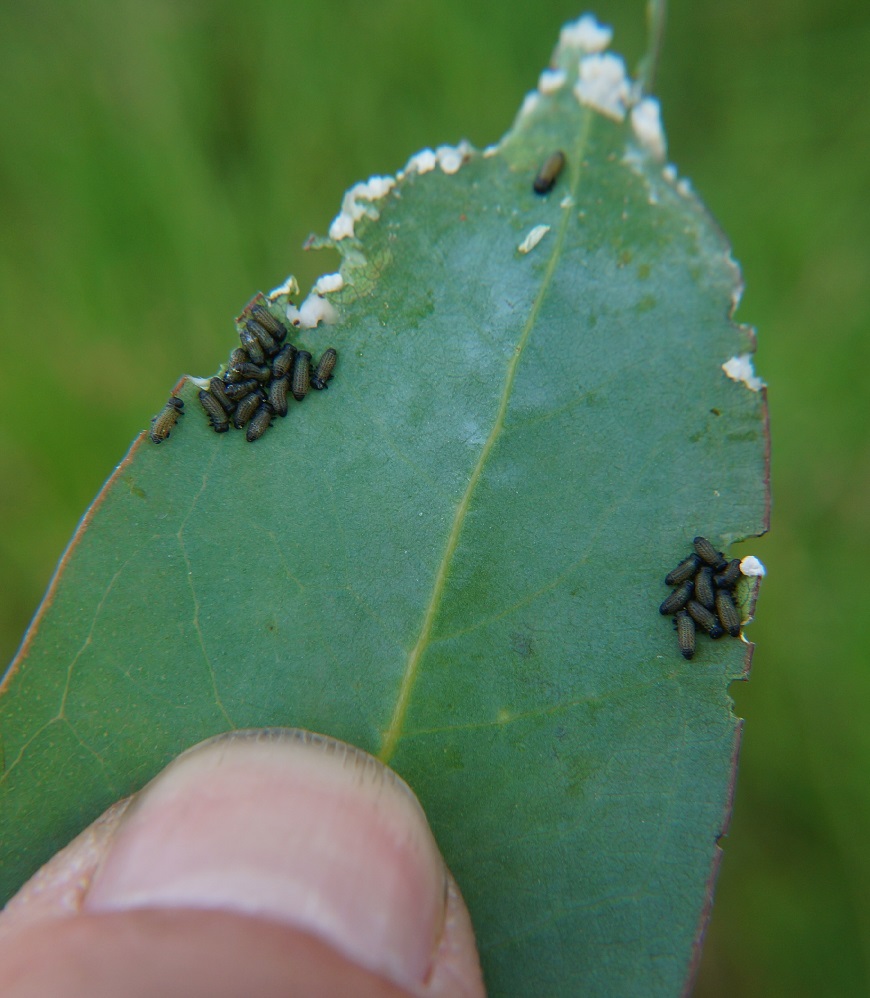PESTS AND DISEASES OF FORESTRY IN NEW ZEALAND
Report on Paropsisterna variicollis, Hawkes Bay November 2016
Two sites visited, Mc Neil's (Waimarama) and Saathof's (Crownthorpe), Hawkes Bay:
Mc Neils Waimarama, (3-5 year old trees)

Large numbers of first, second and third instar larvae:
E. tricarpa
E. bosistoana
High levels of egg masses and young larvae:
E. cladocalyx
Eucalypts with no flush (serious previous chewing damage, pest species unknown) and therefore no beetle larvae or eggs:
E. longifolia
E. camaldulensis
E. argophloia (Found 1 egg mass of P. variicollis)
E. scias
E. quadrangulata (coppice growth only had Paropsis charybdis)
Moderate levels of only P. charybdis damage:
E. muelleriana
E. maculata (found 1 egg mass of P. variicollis)
E. botryoides
E. sphaerocarpa
E. grandis
E. saligna

Lower levels of only P. charybdis damage:
E. macrorhyncha
E. eugenoides
E. globoidea
E. cornuta (found 1 egg mass of ELB)
Untouched
E. regnans (mature trees)
E. obliqua (mature trees)
E. microcorys (mature trees)
E. botryoides (mature trees)
E. saligna (mature trees)
Cleobora mellyi (Southern ladybird) is established at McNeils and these were observed on the blackwoods that they were released on (2 years ago), approximately 1km away from the durable eucalypt trial areas. This predator is of interest because I have observed C. mellyi preying on Paropsisterna eggs and 1st instar larvae in Tasmania.

Saathoff's, Crownthorpe (2 year old trees)
Paropsis charybdis was not observed at this site.
E. globoidea: No eggs or larvae were observed. Occasional beetle only.
E. cladocalyx: Large numbers of beetles, eggs and 1st instar larvae were present.
E. sphaerocarpa: No eggs or larvae were observed. Occasional beetle only.
E. macrorhyncha: No eggs or larvaewere observed. One year old trees.
E. quadrangulata: Large numbers of beetles, eggs and 1st instar larvae were present.
E. bosistoana: Large numbers of beetles, eggs, 1st, 2nd and 3rd instar larvae were observed along with significant leaf chewing. This species appeared to be favoured and the presence of large numbers of maturing larvae was notable.
Some egg masses appeared to have been eaten but no larvae were present. Schellemberg's soldier bugs were observed preying on 3rd instar P. variicollis larvae and mating.
Summary
P. variicollis appears to not be catholic in its choice of Eucalyptus, with apparent preferences. Although early days yet and with no pressure on food resources due to dispersal, the most favoured species appears to be E. bosistoana and E. tricarpa, followed by E. quadrangulata and E. cladocalyx. Although I've observed P. variicollis larvae on E. maidenii and possibly E. nitens, to date these species do not appear to be favoured. However, P. variicollis does appear to have a preference for flush foliage on young trees and although difficult to find on mature E. nitens, E. maideni and E. regnans, it is possible that young trees might be favoured. Further monitoring will be necessary over time to make calls on how serious this pest is. It does look grim for favoured species due to the prolific nature of the species and the apparent absence of parasitoids and predators.
Dean Satchell, 16 November 2016


 Farm Forestry New Zealand
Farm Forestry New Zealand

